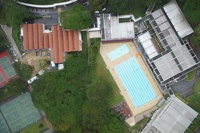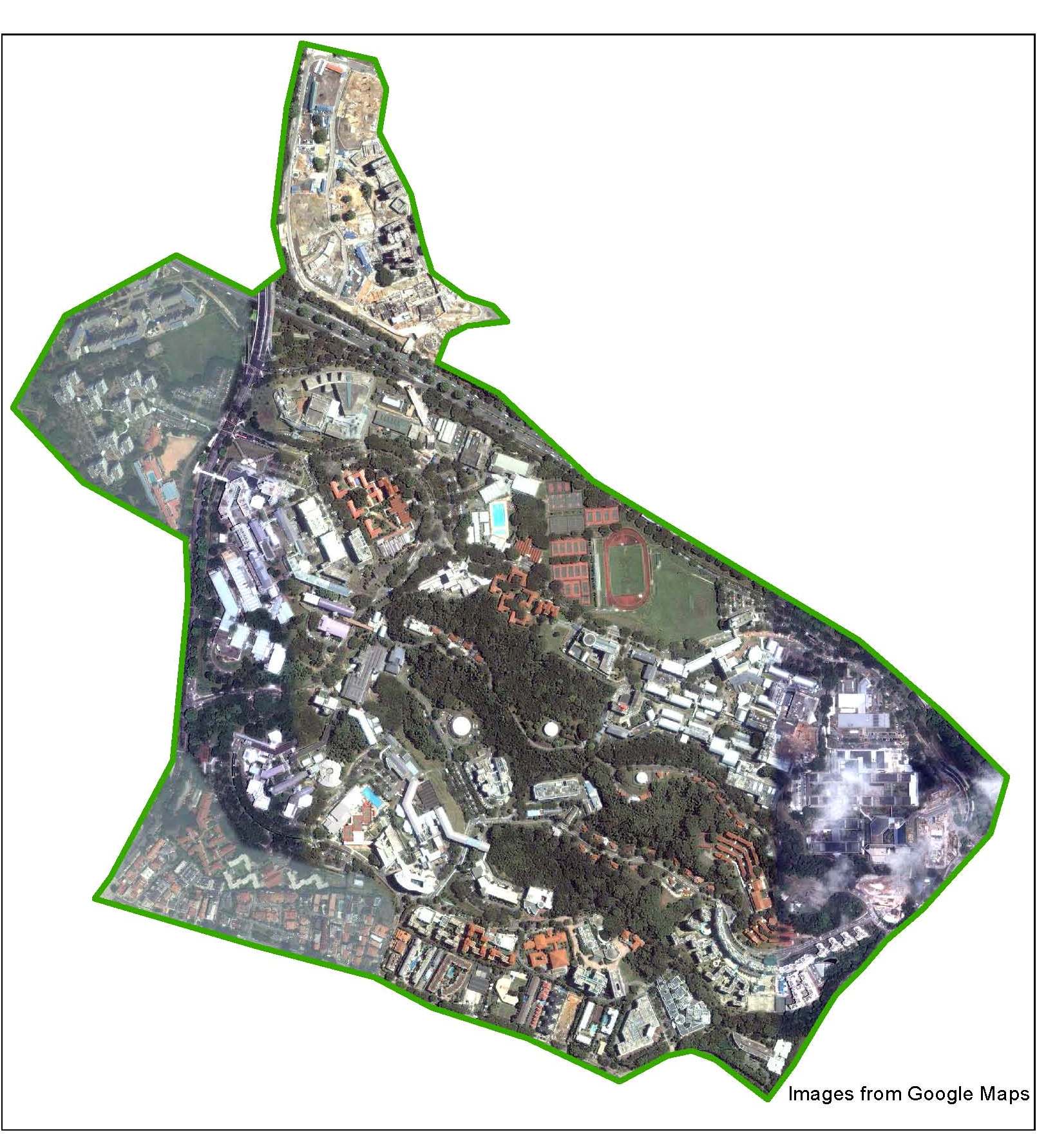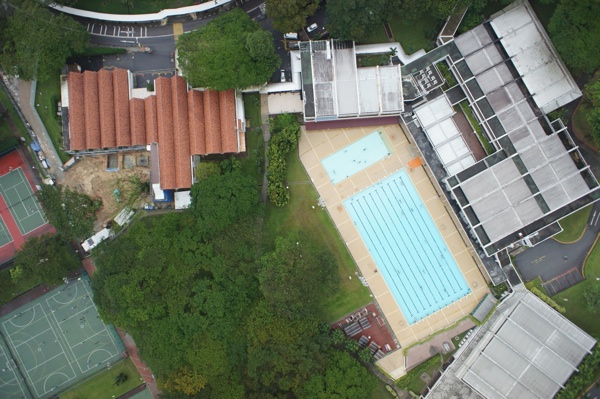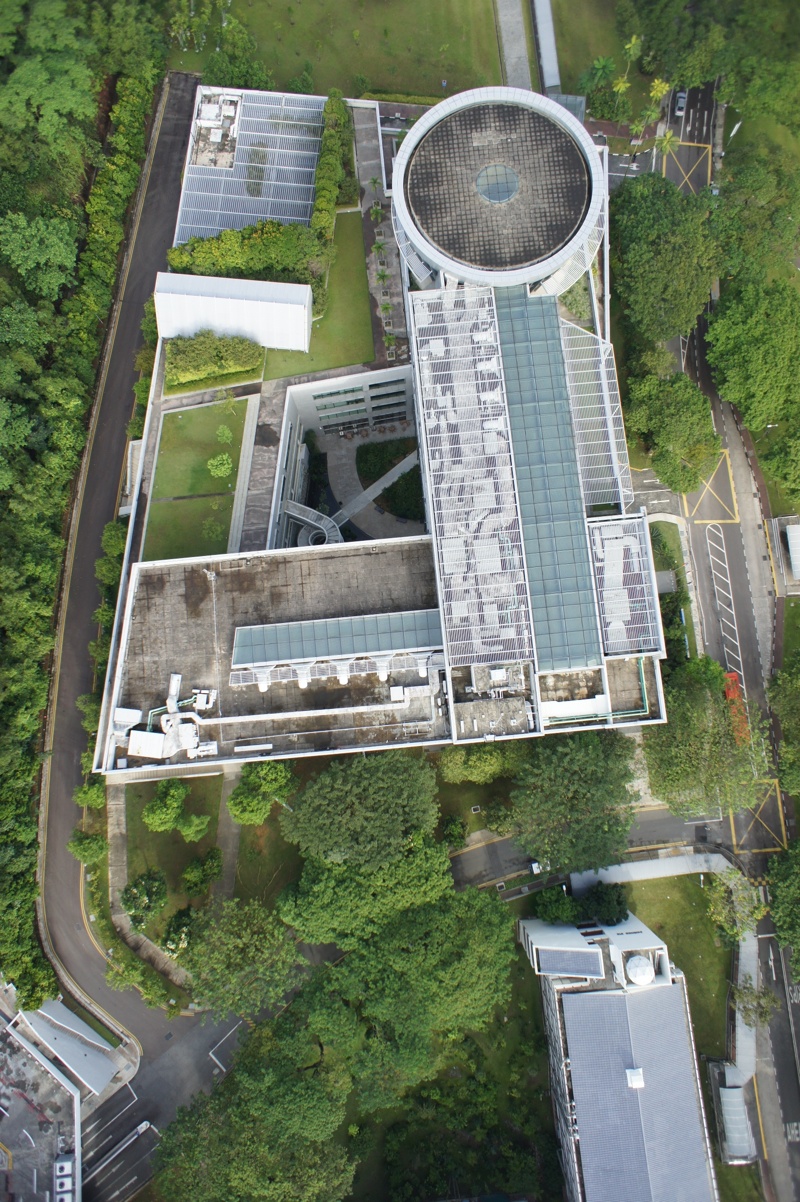
 For the first time Singaporean authorities have given permission for a photogrammetric UAV mapping/modeling flight over an important area of the city. In the context of the SEC-FCL (Future Cities Laboratory) project a pilot study is conducted with the goal to generate a high quality 3D city model of the NUS campus from UAV images. 800 images were needed to cover the area. Data processing is in progress.
For the first time Singaporean authorities have given permission for a photogrammetric UAV mapping/modeling flight over an important area of the city. In the context of the SEC-FCL (Future Cities Laboratory) project a pilot study is conducted with the goal to generate a high quality 3D city model of the NUS campus from UAV images. 800 images were needed to cover the area. Data processing is in progress.
UAVs – Unmanned Aerial Vehicles have recently become a strong focus of attention, since fairly inexpensive platforms, navigation and control devices and sensors for instantaneous digital data production have become available.
Fig. 1a – NUS UAV flight boundary
Nowadays many groups worldwide are engaged in UAV- related R&D. Beyond that, these devices are increasingly finding their way into a great variety of practical applications.Low altitude UAV systems are small, of low to moderate cost, very flexible in terms of use and image acquisition (vertical, oblique and quasi-terrestrial imaging modes) and the images are instantly available for on-line processing.
Also, the ability to fly below a layer of clouds makes them usable in cases where other platforms with optical sensors like standard surveying aircraft will fail. They constitute thus a most flexible data acquisition platform.
There are many diverse systems in use, ranging from fairly big, heavy, long-range and thus expensive drones to small, inexpensive platforms. For obtaining flight permissions a number of factors like weight, size, radio frequency, remote control equipment, experience and certifications of operators, redundancies, safety measures during flight, object distance from next airport and military facilities, etc. play a key role.
 Fig. 1b – Image block as produced with UAV (800 images)
Fig. 1b – Image block as produced with UAV (800 images)
In general it can be said that the lighter (and thus less dangerous) the platform, the more readily permissions are given. Sometimes it takes a long time to obtain those permissions. We have experienced cases where permissions from up to six agencies/groups had to be obtained.
Singapore ranks among the more restrictive countries worldwide as far as access to certain kind of geodata is concerned. The author is engaged as Principal Investigator on the Simulation Platform of the Future Cities Laboratory (FCL).
FCL was established by ETH Zurich and Singapore’s National Research Foundation (NRF). It is run under the auspices of the Singapore-ETH Centre for Global Environmental Sustainability (SEC). Collaborating academic partners include the National University of Singapore (NUS), Nanyang Technological University (NTU), and the École Polytechnique Fédérale de Lausanne (EPFL).
The Future Cities Laboratory (FCL) is a trans-disciplinary research centre focusing on urban sustainability in a global frame. It is the first research programme of the Singapore-ETH Centre for Global Environmental Sustainability (SEC). It is home to a community of over 100 PhD, postdoctoral and Professorial researchers working on diverse themes related to future cities and environmental sustainability.
 Figure 2a: UAV image over NUS sports facilities
Figure 2a: UAV image over NUS sports facilities
The Simulation Platform, as one of nine research modules, provides for services and research for future planning environments. It supports design and decision making processes and examines how to effectively deal with the growing volume of urban-related data. It investigates new techniques and methods for the acquisition, organization, retrieval, interaction, and visualization of such data. It will propose techniques for designers, decision-makers and stakeholders to access necessary data about the city in innovative and dynamic ways.
These tasks require a vast amount of very diverse data, which in many cases may even not be available yet. In this context of data acquisition our UAV activities must be viewed. We selected the Campus of NUS (National University of Singapore) as a pilot project for demonstrating our modelling capabilities and also using it as a testbed for new algorithmic developments. Since neither aerial images nor LiDAR data are accessible over Singapore and satellite image data is not of sufficient resolution for our purposes we decided to employ a UAV for aerial image data collection.
As platform we selected the Falcon-8 octocopter from Ascending Technologies, a system which had proven its suitability under other project conditions and which was available on very short notice. The system comes with autopilot and stabilizer, such that we can produce very accurately overlapping images even under non-ideal conditions. The camera offered by the company is a Sony NEX-5 with 16 mm fix lens, and a 1.11” CMOS chip delivering 14.2 Mpixel.
Figure 1a shows the project area, Figure 1b the photogrammetric block layout, as flown. The project area consists of a topographically significant hilly structure with about 75 meter height differences, some very high-rise buildings (beyond 60 m above ground) and a great variety of different objects (buildings, roads, water tanks, swimming pool, sports facilities, strong tropical vegetation, etc). Since we were not allowed to fly over the major roads we split the area into two blocks of in total 1.6 sqkm. This may not sound like a big area, but in light of the given constraints we had to collect ca. 800 images, taken from 42 local flights. These constraints were:
The CMOS sensor-based images turned all out to be fine with the exception that the Sony lens suffered under relatively large colour refraction, causing non-linear un-sharpness towards the image perimeters and under strong unsharpness effects in the image corners at small f-stop numbers (e.g. at f/3.5). Figures 2a and b show images over the sports facilities and the University Hall. Since we had a very short exposure times (1/500 sec) even flying tennis balls can be distinguished.
After image acquisition we are now entering the phase of data processing, which will consist of the stages GCP (Ground Control Point) determination by GPS, tie point measurement by image matching, geo-referencing by bundle triangulation, semi-automated model generation by CyberCity Modeler, including DTM generation, texture mapping and computer object integration (e.g. for bushes, trees, etc.).
 Fig. 2b – UAV image over University Hall
Fig. 2b – UAV image over University Hall
In summary, our experiences indicate that if it has to be flown under the mentioned constraints even this relatively small area caused too many take-off standpoints, local flights and too many images. For general modeling/mapping projects the small image format (14 Mpixel compared to 529 Mpixel of a conventional aerial image) is still a serious setback.
This factor 38 in the number of images is an unpleasant fact, which can only be overcome if higher flying heights can be used and if ground resolution of the UAV images is sacrificed.
Therefore we should not consider UAV platforms as being competitive to standard aerial imagery per se, but rather as a complimentary device, which in many well-defined cases (small area size, lack of availability of surveying aircraft, lack of accessibility, cost savings, etc.) may be clearly advantageous.
Also, recently the interest in security-related applications and disaster monitoring has grown considerably. During a crisis (e.g. industrial accidents, natural disasters like forest fires, floodings, tsunamis, earthquakes), there is an urgent need for on-line and real-time information on the actual situation. UAVs are excellent devices to be used for that.
In addition we also have experienced great success with using model UAVs in class work. The Bachelor and Master students of the Geomatics curriculum of ETH Zurich have been using this technology in regular lab-work. They can follow in a hands-on fashion the whole process of flight planning, image data acquisition and data processing. They do have control about all steps of the process. This has an enormous educational value and serves as a motivation booster.
This article first appeared in Asian Surveying and Mapping magazine (www.asmmag.com).